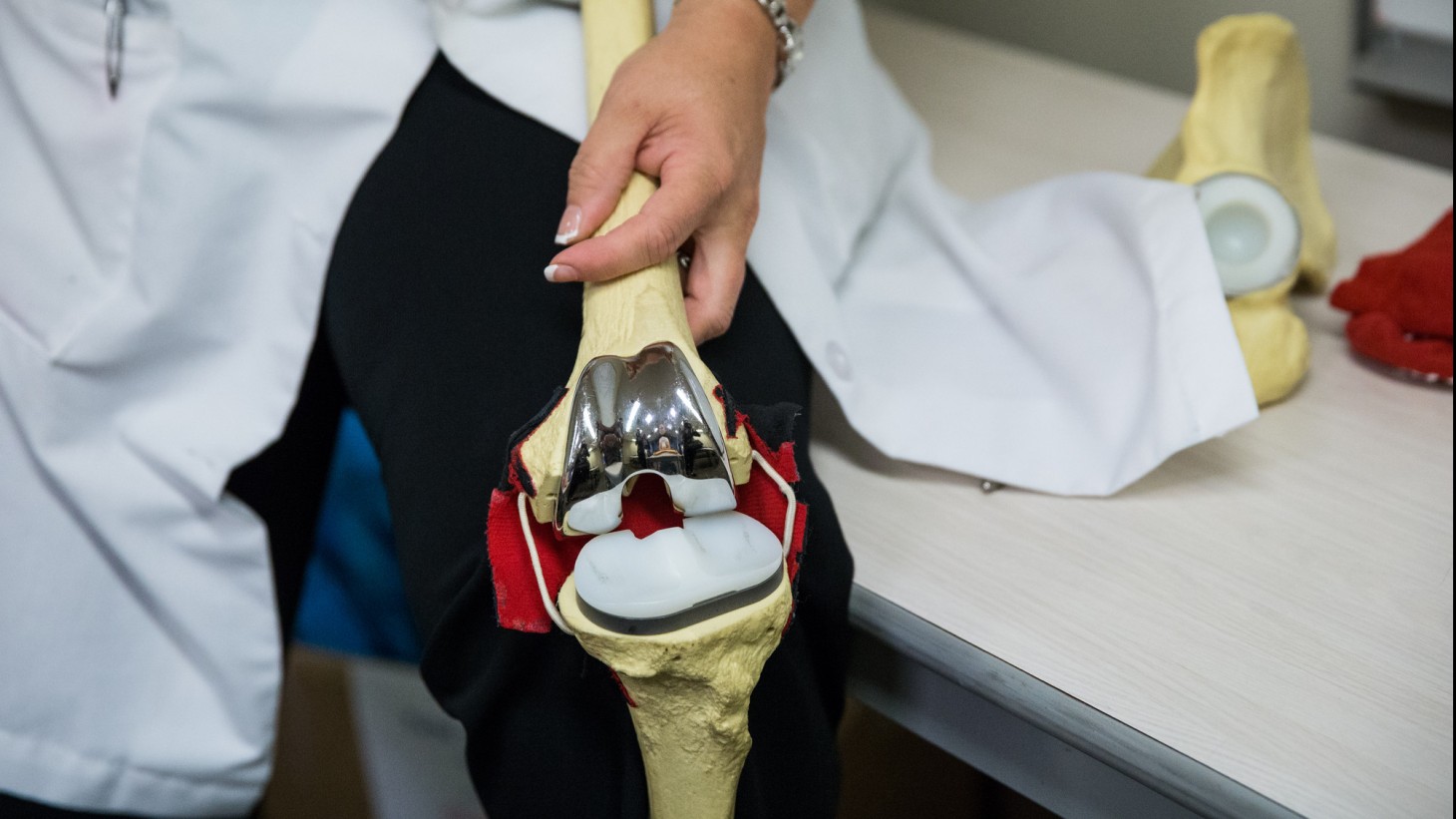Teamwork Eases Pain of Change

UBT members stepped up to address staff concerns and keep morale high following the adoption of a new approach to caring for total joint patients.
Faced with a major change in protocol, this med-surg UBT united to help its patients—and its own staff
The new goal was dramatic: Reduce hospital stays to 23 hours for total joint patients.
Renee Portillo, RN, was worried.
“It was a shocker. Our staff was used to patients going home in two to three days,” says Portillo, former assistant clinical director and management co-lead of the 7 South medical-surgical team at Fontana Medical Center in Southern California.
The accelerated time frame meant that the unit’s nurses, who care for total joint patients following surgery, would have less time to prepare them for discharge. They’d also need to help choreograph care across multiple departments—Orthopedics, the operating room, Physical Therapy, Home Health—from pre-admission to discharge.
Who best to help the team through this change? The team itself.
“We used our UBT to help change the culture,” Portillo says.
Wave of the future
“We helped our nurses be successful by having them anticipate patients’ needs and prepare them for discharge,” says Enrique Rivero, RN, a surgical nurse and UNAC/UHCP member who is the team’s union co-lead.
Fontana is among a growing number of hospitals across the United States to offer a combination of shorter hospital stays and more outpatient care for hip and knee replacement patients. The trend is driven by less-invasive surgical techniques, improved pain management and rehabilitation practices, and patients’ desire to return home as soon as possible.
“There were a lot of challenges. A lot of it had to do with bringing people together,” says Mary Hurley, MD, chief of Orthopedics, who championed the new approach. “They all had to buy in and be willing to support this in order to have a successful program.”
The new approach, which Fontana introduced in January 2014 after months of researching best practices, gets patients walking within hours of surgery and enables them to recover within the comfort of their own homes. The initiative takes advantage of Kaiser Permanente’s integrated model of care and is designed to improve clinical outcomes and reduce costly hospital stays.
There were a lot of challenges. A lot of it had to do with bringing people together. They all had to buy in and be willing to support this in order to have a successful program.
Identifying top concerns
As it considered the new approach, the 7 South unit’s top concern was patient safety and pain management.
To address those issues, the representative UBT’s eight members—mostly nurses—met with Vicki Kreps, RN, the clinical supervisor of the Home Health department. Kreps’ team of registered nurses and physical therapists help care for patients after discharge.
The meeting resulted in Kreps attending the 7 South team meetings for three months.
“It helped build bonds of trust with the inpatient nurses,” Kreps says. “That trust is so significant.”
Once implementation started, charge nurses committed to making post-discharge calls to patients and then shared updates during department huddles.
“The discharge calls have been really beneficial,” says Portillo, now assistant department administrator of Family Medicine at the Riverside Medical Center. The updates gave nurses the confidence that patients were doing well at home and turned them into active supporters of the new protocol.
Success on every level
The team’s representative members helped their colleagues adapt to the new approach in other ways as well. When nurses were concerned about pain management, the representative members invited a pharmacist to speak with the rest of the team. UBT representatives also coached nursing staff on managing patients’ expectations and preparing them for early discharge.
The hard work is paying off. Between January and November 2015, Fontana performed 974 hip and knee-replacement procedures. About 64 percent of total joint patients were discharged within a day of surgery. Quality remains high: As of the second quarter of 2015, there was one hospital readmission within 30 days of discharge and no service recovery issues. The new approach is cost effective, too, producing $1.2 million in hospital savings during the first year.
Being deeply involved in decisions affecting their work helped the department’s 62 employees embrace the new model of care.
“Our unit is successful because our UBT gives us a chance to tell others what’s working and what’s not working,” says UBT member Christina Cook, a mobility technician and member of United Steelworkers Local 7600. “It gives everyone’s voice a chance to be heard.”
savings by medical-surgical team in Fontana after following new joint-replacement surgery discharge protocol
